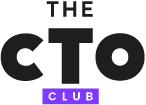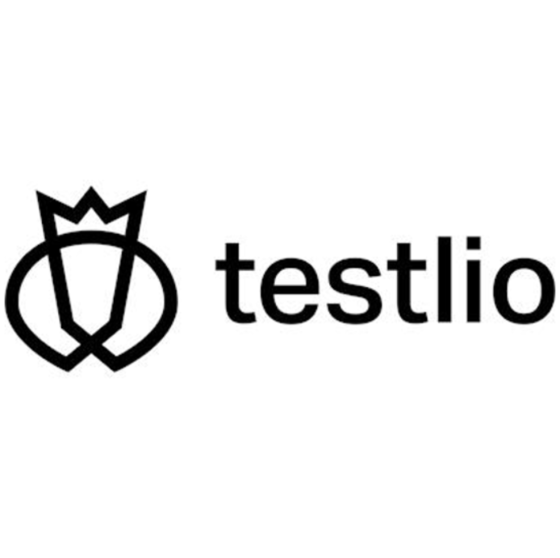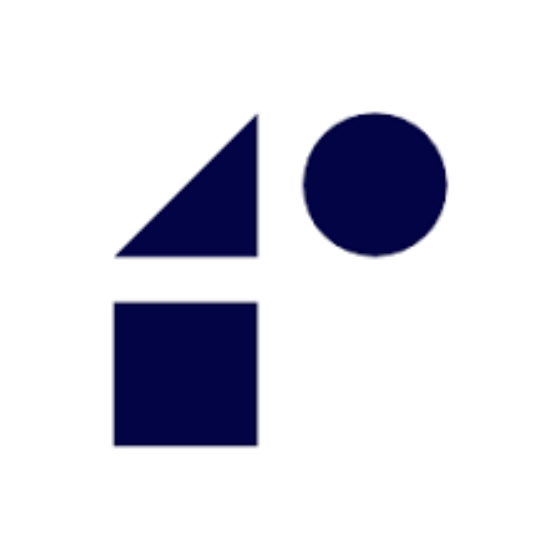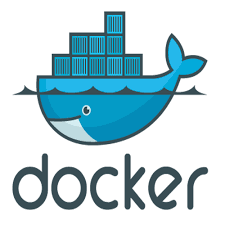10 Best Quality Engineering Tools Shortlist
Here’s a shortlist of the best software to help with your quality engineering process:
With so many different quality engineering software available, figuring out which is right for you is tough. You know you want to ensure that engineering products meet specific regulatory, quality, and market standards but need to figure out which tool is best. I've got you! In this post I'll help make your choice easy, sharing my personal experiences using dozens of different quality engineering tools with various teams and projects, with my picks of the best quality engineering software.
Why Trust Our Software Reviews
Best Quality Engineering Software Summary
This comparison chart summarizes pricing details for my top quality engineering software selections to help you find the best one for your budget and business needs.
| Tool | Best For | Trial Info | Price | ||
|---|---|---|---|---|---|
| 1 | Best continuous testing automation platform for enterprise | 14-day free trial + free demo | Pricing upon request | Website | |
| 2 | Best for outsourcing quality engineering, test creation, and issue reports | Free demo available | Pricing upon request | Website | |
| 3 | Best for autonomous test generation | Free trial available | From $299/month | Website | |
| 4 | Best for faster test feedback | 60-day free trial | From $59/seat/month | Website | |
| 5 | Best for extensive device coverage | Not available | Pricing upon request | Website | |
| 6 | Best for low-code test automation | 14-day free trial | From $212/month | Website | |
| 7 | Best for AI insights using natural language via a chat interface | Free plan + demo available | Pricing upon request | Website | |
| 8 | Best enterprise quality governance and software risk scoring | Not available | Pricing is available upon request. | Website | |
| 9 | Best for implementing test automation within your workflow | Not available | Customized pricing upon request | Website | |
| 10 | Best software quality engineering tool for managing team health | “free forever” trial for up to 8 devs (with 45 days of data retention). | $15/dev/month | Website |
-

Docker
Visit WebsiteThis is an aggregated rating for this tool including ratings from Crozdesk users and ratings from other sites.4.6 -

Pulumi
Visit WebsiteThis is an aggregated rating for this tool including ratings from Crozdesk users and ratings from other sites.4.8 -

GitHub Actions
Visit Website
Best Quality Engineering Software Reviews
Below are my detailed summaries of the best quality engineering software that made it onto my shortlist. My reviews offer a detailed look at the key features, pros & cons, integrations, and ideal use cases of each tool to help you find the best one for you.
Best continuous testing automation platform for enterprise
Tricentis’s Continuous Testing Platform supports the entire testing lifecycle across enterprise and custom applications. Tricentis uses AI-driven data analytics to power faster, smarter testing and its platform is fully automated and codeless, making it easy and quick to set up and run automated tests, whether you’re a developer or a business leader.
The Tosca automated testing module separates the automation model from the underlying application. This means that changes to the application’s source code don’t impact the test automation. This helps to accelerate software testing by removing bottlenecks.
Tricentis pricing information is unavailable. Free trials are available for the qTest and NeoLoad modules.
QA Wolf
Best for outsourcing quality engineering, test creation, and issue reports
QA Wolf is a high-quality testing service used to outsource quality engineering tasks. Their service includes an expert team of QA engineers to write, run, and repeat all your critical tests. They are used by companies like Gumroad, MainStreet, Mailchimp, Replay, and Padlet.
QA Wolf does quality engineering (QE) by having their team run tests, investigate failures, and then write up a bug/issue report with repro steps, a video recording, logs, and any other data you need. You can log into the platform to view progress at any time or wait for a scheduled review session. Key services include building a test plan for you, end-to-end test coverage, failure triaging and test maintenance, high-quality bug reports, fast parallel test run infrastructure, and an easy-to-use app for real-time status updates.
QA Wolf's software is built on Microsoft Playwright, which is a common product chosen for open-source developments. This gives clients the freedom to carry all their existing tests and data with them should they ever want to bring their testing in-house on the test suite of their choice.
QA Wolf integrates with tools like Stripe, Salesforce, email providers, Auth0, SMS, Github, and even more options through their flexible API.
Owlity is an AI-driven quality assurance (QA) solution designed to automate the entire testing process for your applications. By leveraging artificial intelligence, it autonomously designs tests, develops automation scripts, and identifies bugs, reducing the need for human intervention.
I picked Owlity for its autonomous scanning and test creation. Just by entering your app's URL, Owlity uses computer vision to analyze features and generate test cases automatically. It also supports self-healing test scripts that adapt as your app changes, so you don’t have to manually update tests.
Some integrations include GitHub Actions, GitLab, Jenkins, Jira, TestRail, ClickUp, Slack, Azure, and Zephyr.
Appsurify’s TestBrain is a risk-based testing solution that delivers test results on a per-change basis. It's one of the best quality engineering software tools in the market for experienced testing teams who want to build more efficiencies into their test automation practice, providing features that help QA teams streamline their software testing environment, reduce CI pipeline build times, achieve Shift Left testing, and reduce overall costs.
Appsurify has two main subscription plans available: Plus and Professional. Appsurify Plus is tailored for small businesses and startups, and it starts at $59 per seat/month with a 60-day free trial. The Professional plan best suits the QA automation testing requirements of midsize teams and large enterprises. SaaS and on-premise license options are available, but the latter is only bundled with the Professional plan.
Both subscription packages come with a variety of features such as smart test selection and execution, auto-mapping of tests to code, advanced reporting, advanced analytics, risk alerts, and flaky failure prevention. Both plans support various test types, including UI, E2E, integration, unit, API tests, and more. The features exclusive to the Professional package are prioritized manual testing, full onboarding, and priority support, although standard support and initial setup onboarding are included in the Plus package too.
Testlio is a managed application testing platform that combines a global network of expert testers with robust client services. This ensures that your software delivers seamless user experiences across various devices, languages, and locations.
I like that Testlio offers AI-driven test creation and refactoring capabilities. By leveraging advanced AI technologies, Testlio accelerates the development and maintenance of test cases, allowing your team to adapt swiftly to evolving project requirements. This means faster test cycles and more accurate results, keeping your projects on track.
The platform also grants access to over 600,000 real devices across different operating systems, locations, and configurations. This allows you to test under real-world conditions, replicating diverse user environments to uncover issues that might be missed in limited lab testing.
Reflect is an AI-powered quality engineering tool built for fast, code-free test automation. It allows you to create and run end-to-end, regression, and API tests simply by describing actions in plain English—no CSS selectors or XPath required. Companies use Reflect to reduce QA bottlenecks, increase test coverage, and cut down on time spent maintaining flaky test suites.
Reflect supports quality engineering by letting you build and maintain tests faster than traditional frameworks. You can record browser actions, use AI prompts to define test steps, and convert manual test cases into automated runs via a Chrome extension. The platform continuously adapts tests as your app evolves, minimizing maintenance.
It also runs visual checks, API validations, and data-driven scenarios across multiple browsers. After each run, Reflect gives you a detailed breakdown—complete with repro steps, console/network logs, and HD video—so you can debug fast.
Reflect integrates with CI/CD platforms like GitHub, Jenkins, CircleCI, Azure DevOps, and Codefresh, as well as issue trackers like Jira and Linear. You can also connect it to Slack, TestRail, Google Calendar, Zapier, Office 365, and more to keep your testing pipeline synced and your team in the loop.
Best for AI insights using natural language via a chat interface
New Relic is a performance monitoring system for data for engineers to monitor, debug, and improve their entire stack. It's designed to help you keep an eye on your software's health and performance with a variety of flexible reports and dashboards. It's incredibly useful for getting a clear, detailed picture of how your software is performing. It's not just about spotting problems—although it's great at that—it's also about understanding trends, identifying potential issues before they become big problems, and generally keeping everything running smoothly.
The APM (Application Performance Monitoring) feature is a feature worth noting. It gives you real-time insights into your software's performance, so you can spot and fix issues quickly. Then there's the Infrastructure Monitoring feature, which lets you keep an eye on your entire infrastructure, from servers to cloud services. And the Browser Monitoring feature is great for understanding how your software is performing from the user's perspective. They also have a generative AI assistant, New Relic Grok, which can inject conversational questions like "What caused this CPU spike?" and answer them via a chat interface.
Integrations include over 600 apps that include cloud platforms like AWS, Google Cloud, and Microsoft Azure, CI/CD tools like Jenkins, CircleCI, and Travis CI, communication tools like Slack and PagerDuty, and other monitoring and analytics tools like Grafana, Datadog, and Splunk. It also has an API you can use to build custom integrations.
New Relic has a free version available. Their paid plans start at $49/user/month and offer additional features, like SAML single sign-on, 24x7 support availability, 2-hour critical initial support response SLA, and additional data ingest per month.
SeaLights is an enterprise software risk scoring tool that enables software development teams to implement quality governance at scale.
SeaLights automatically identifies, analyzes, and flags software quality risks in real-time throughout the SDLC, empowering software teams to deliver quality at speed.
SeaLights pricing information is currently unavailable.
Apexon is a quality engineering service that aims to help you and your team prepare for new requirements and expectations resulting from digital advancement. Apexon strives to equip you with tools and methodologies to help you navigate the transformation within digital strategies.Apexon provides an abundance of features such as test automation services, which allow you to create and run your own tests. The tool has framework implementation and automated regression testing as a part of their end to end test automation services so you can easily integrate their services within your workflow. Apexon also offers data engineering and service visualization, providing you every opportunity to ensure your application lifecycle is fully covered.Apexon provides customized pricing upon request.
LinearB is a project board specifically designed for dev leads, providing detailed project updates in a single screen. This helps dev leads to track project progress, identify risks such as bottlenecks and high-risk code, and offer assistance where it’s needed most.
LinearB uses team-based metrics (not individual metrics) to help dev leads track quality and efficiency trends and distribute work evenly to prevent team overload or burnout.
LinearB pricing starts from $15 per dev per month and they offer a “free forever” trial for up to 8 devs (with 45 days of data retention).
Other Quality Engineering Software
Here are some additional quality engineering software options that didn’t make it onto my shortlist, but are still worth checking out:
- Katalium
Open-source testing automation tool
- Perforce Suite
Software quality assurance suite for devops
- Sympli
Tool for collaboration between designers and developers
- CucumberStudio
Collaboration tool for behavior-driven development
- Inflectra Suite
Holistic application testing product ecosystem
- Lucidchart
For collaborative system planning and analysis
- Kualitee
For AI-driven test case generation
- BugBug
Low-code solution for startups & SMBs
Quality Engineering Software Selection Criteria
When selecting the best quality engineering software to include in this list, I considered common buyer needs and pain points like ensuring product compliance and managing defect tracking. I also used the following framework to keep my evaluation structured and fair:
Core Functionality (25% of total score)
To be considered for inclusion in this list, each solution had to fulfill these common use cases:
- Defect tracking
- Test management
- Quality assurance reporting
- Compliance management
- Process automation
Additional Standout Features (25% of total score)
To help further narrow down the competition, I also looked for unique features, such as:
- AI-driven analytics
- Real-time collaboration tools
- Customizable dashboards
- Integration with IoT devices
- Advanced security protocols
Usability (10% of total score)
To get a sense of the usability of each system, I considered the following:
- Intuitive interface design
- Ease of navigation
- Learning curve
- Customization options
- Mobile accessibility
Onboarding (10% of total score)
To evaluate the onboarding experience for each platform, I considered the following:
- Availability of training videos
- Interactive product tours
- Accessible support chatbots
- User-friendly templates
- Webinars for new users
Customer Support (10% of total score)
To assess each software provider’s customer support services, I considered the following:
- 24/7 support availability
- Response time to queries
- Availability of live chat
- Comprehensive knowledge base
- Multi-language support
Value For Money (10% of total score)
To evaluate the value for money of each platform, I considered the following:
- Competitive pricing
- Tiered subscription options
- Free trial availability
- Cost versus feature set
- Discounts for annual plans
Customer Reviews (10% of total score)
To get a sense of overall customer satisfaction, I considered the following when reading customer reviews:
- Overall satisfaction ratings
- Commonly reported issues
- Praise for specific features
- Feedback on customer service
- Trends in review scores over time
How to Choose Quality Engineering Software
It’s easy to get bogged down in long feature lists and complex pricing structures. To help you stay focused as you work through your unique software selection process, here’s a checklist of factors to keep in mind:
| Factor | What to Consider |
|---|---|
| Scalability | Can the software grow with your business? Look for options that support increased data volumes and users without a hitch. Consider future growth plans and peak demand. |
| Integrations | Does it connect with your current systems? Check for compatibility with tools you already use, like project management or ERP systems, to avoid data silos. |
| Customizability | Can you tailor it to your workflow? Look for software that lets you adjust processes and dashboards to fit your team's needs without excessive complexity. |
| Ease of use | Will your team find it intuitive? Choose software with a user-friendly interface to minimize training time and errors. Test the demo to assess navigation clarity. |
| Implementation and onboarding | How long will it take to get up and running? Consider the resources needed for setup, training, and data migration. Opt for tools with clear guides and support. |
| Cost | Is it within your budget? Compare subscription plans, hidden fees, and total cost of ownership. Weigh the price against the value of features and potential savings. |
| Security safeguards | Does it protect your data? Ensure the software complies with data protection standards and offers features like encryption and multi-factor authentication. |
| Support availability | Will you have access to help when needed? Look for 24/7 support options, response times, and available communication channels to resolve issues quickly. |
What Is Quality Engineering Software?
Quality engineering software comprises tools and applications used to ensure and enhance the quality of engineering products and processes. These software solutions facilitate various activities such as compliance management, process optimization, defect management, and performance monitoring.
They are used extensively in engineering projects to manage and improve product quality throughout the development lifecycle, from design to production.
Features
When selecting quality engineering software, keep an eye out for the following key features:
- Defect tracking: Helps identify, log, and monitor defects throughout the development process, ensuring timely resolutions.
- Test management: Organizes and manages test cases, schedules, and results to improve testing efficiency and effectiveness.
- Compliance management: Ensures that products meet industry regulations and standards, reducing the risk of non-compliance penalties.
- Process automation: Automates repetitive tasks and processes, saving time and reducing human error in quality assurance activities.
- AI-driven analytics: Analyzes data to provide insights and predictive analytics, aiding in proactive quality management.
- Customizable dashboards: Allows users to tailor dashboards to their specific needs, providing quick access to relevant data and metrics.
- Integration capabilities: Connects with existing tools and systems to provide a seamless workflow and avoid data silos.
- Security safeguards: Protects sensitive data with encryption and other security measures, ensuring data integrity and confidentiality.
- User-friendly interface: Offers an intuitive design that minimizes the learning curve and enhances user experience.
- Real-time collaboration tools: Facilitates communication and collaboration among team members, improving project coordination and decision-making.
Benefits
Implementing quality engineering software provides several benefits for your team and your business. Here are a few you can look forward to:
- Improved product quality: By using defect tracking and test management, your team can identify and fix issues early, leading to higher quality products.
- Time savings: Process automation reduces manual tasks, freeing up time for your team to focus on more strategic activities.
- Regulatory compliance: Compliance management ensures your products meet industry standards, reducing the risk of penalties.
- Enhanced decision-making: AI-driven analytics provide insights that help your team make informed decisions quickly.
- Better collaboration: Real-time collaboration tools enable smoother communication among team members, improving coordination.
- Cost efficiency: By integrating with existing systems, the software reduces the need for additional resources, saving costs.
- Data security: Security safeguards protect your sensitive information, ensuring data integrity and peace of mind.
Costs & Pricing
Selecting quality engineering software requires an understanding of the various pricing models and plans available. Costs vary based on features, team size, add-ons, and more. The table below summarizes common plans, their average prices, and typical features included in quality engineering software solutions:
Plan Comparison Table for Quality Engineering Software
| Plan Type | Average Price | Common Features |
|---|---|---|
| Free Plan | $0 | Basic defect tracking, limited test management, and basic reporting. |
| Personal Plan | $5-$25/user/month | Advanced defect tracking, test management tools, and customizable dashboards. |
| Business Plan | $30-$60/user/month | Full compliance management, process automation, and integration capabilities. |
| Enterprise Plan | $70+/user/month | AI-driven analytics, enhanced security safeguards, and real-time collaboration. |
Quality Engineering Software FAQs
Here are some answers to common questions about quality engineering software:
What are the 3 C's of software quality?
The 3 C’s of software quality are competency, completeness, and correctness. Competency ensures the software performs as intended, completeness means it meets all specified requirements, and correctness refers to the absence of bugs and errors. Look for tools that help maintain these standards.
What are the 4 dimensions of software quality?
The 4 dimensions of software quality include functionality, reliability, usability, and efficiency. Functionality ensures the software meets user needs, reliability focuses on consistent performance, usability relates to ease of use, and efficiency covers resource management. Choose tools that excel in these areas.
What are the five software quality factors?
Five key software quality factors are correctness, reliability, efficiency, integrity, and usability. Correctness ensures accurate functionality, reliability means consistent performance, efficiency involves resource management, integrity protects against unauthorized access, and usability relates to ease of use.
How can quality engineering software improve my team's workflow?
Quality engineering software can automate repetitive tasks, improve defect tracking, and ensure compliance. By streamlining processes and providing real-time insights, it helps your team focus on strategic activities and make informed decisions, ultimately enhancing productivity and product quality.
What’s Next:
If you're in the process of researching quality engineering software, connect with a SoftwareSelect advisor for free recommendations.
You fill out a form and have a quick chat where they get into the specifics of your needs. Then you'll get a shortlist of software to review. They'll even support you through the entire buying process, including price negotiations.
























